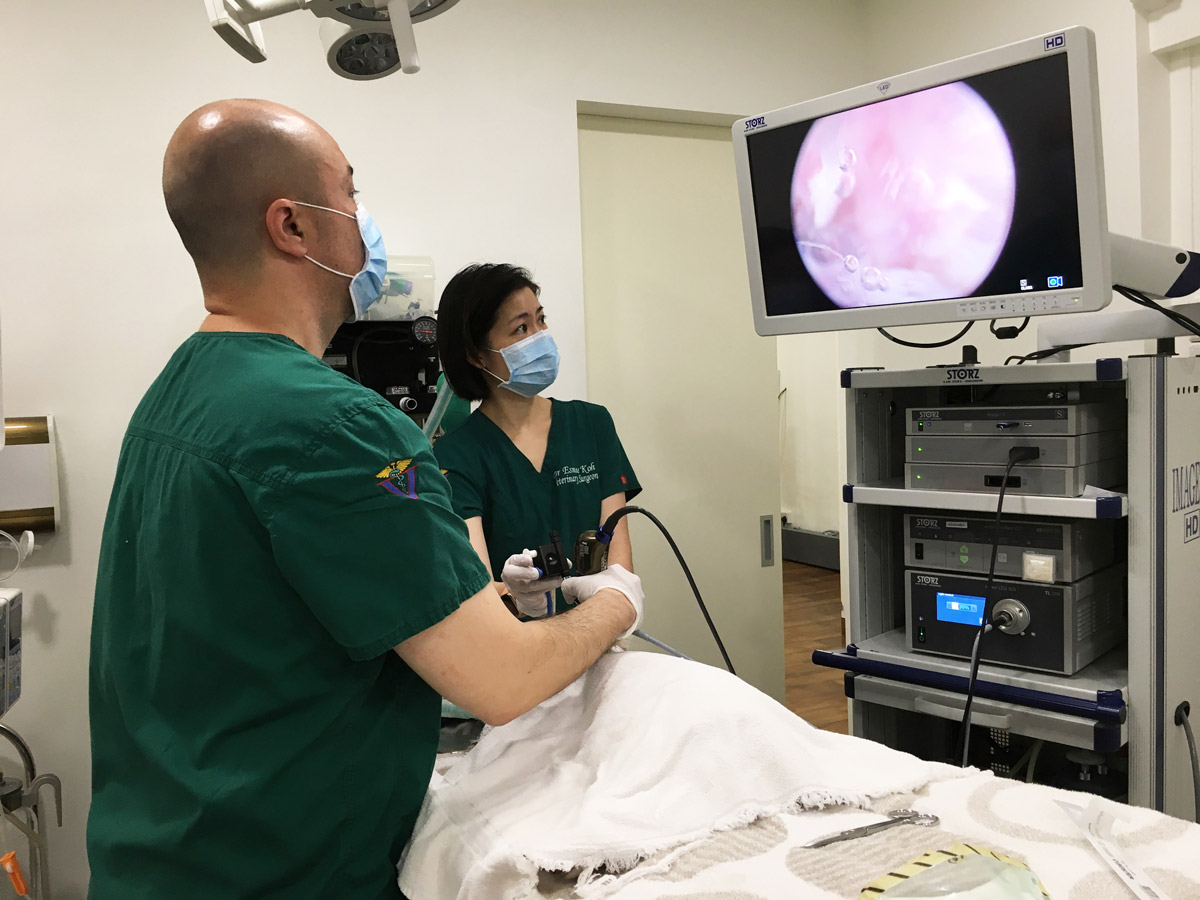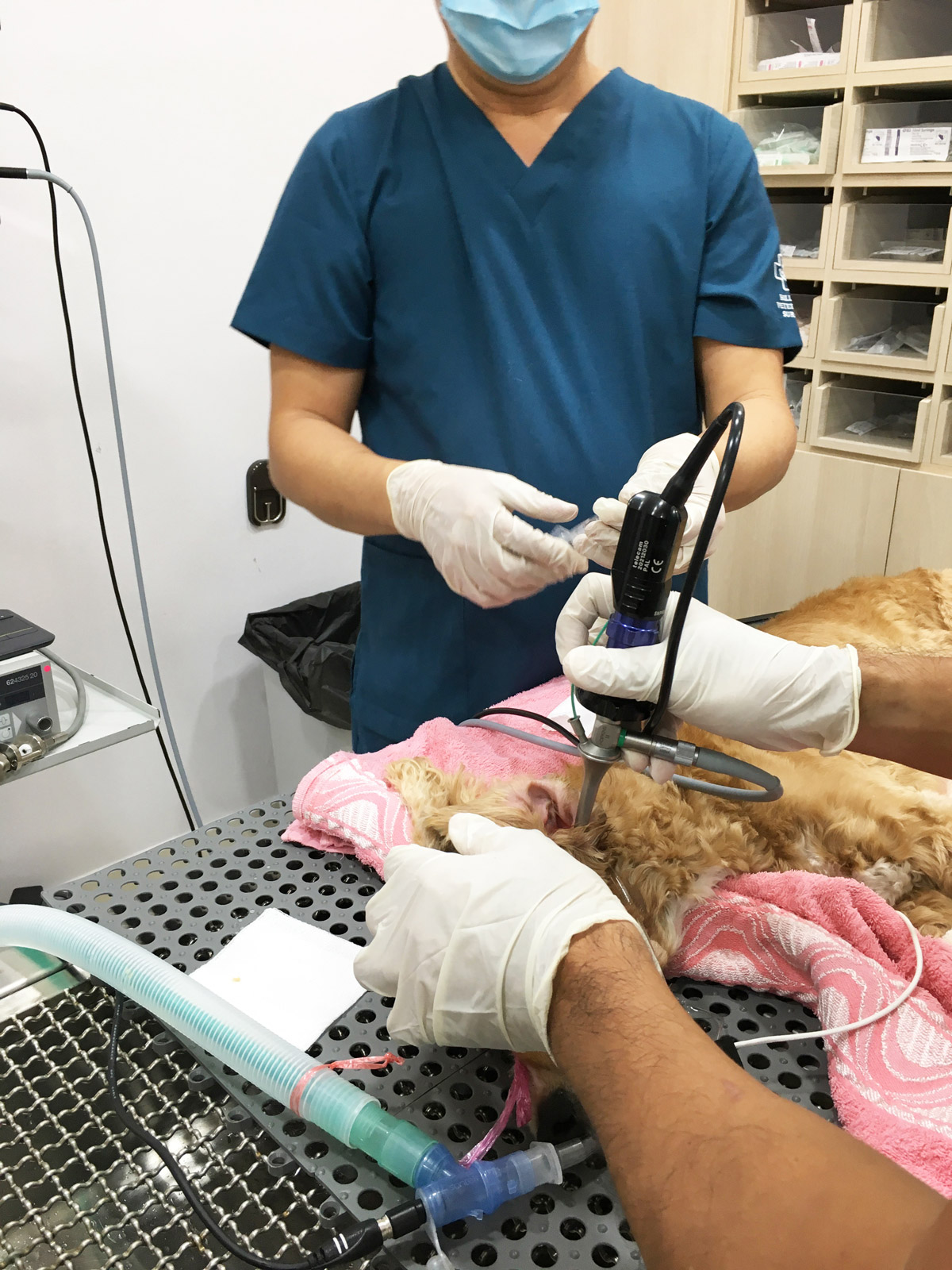Getting Earducated


We take a look at the underlying issues behind pet ear infections and what to do when they occur
Understanding ear infections
Ear infections are one of the most common health issues that dog and cat owners face. They can be frustrating as without proper treatment or understanding of the causes, these infections can affect your pet again and again. Dr. Simon Quek from Hillside Veterinary Surgery tells us that out of all his patients that come in with ear infections, the most common species are dogs. While ear infections are common, only five to ten percent of the patients are considered severe cases.
The severity of an ear infection depends on the part of the ear affected. “The external ear or the middle ear can be infected,” Dr. Quek said. “The middle ear infection is worse because it is a deeper ear infection.” This infection lies behind the eardrum, which allows dirt to travel deeper into the ear canal. “Once the middle ear is infected, it usually means the eardrum has been ruptured and thus makes it harder to treat,” Dr. Quek continued. When the middle ear is infected, the pet’s hearing is likely to be impaired as well.
The most severe case of ear infections in pets would be an inner ear infection – this is when owners will notice a change in their pet’s behaviour. “Once the inner ear is affected, there will be head tilts and balance problems. The pet will walk in circles, fall over or become deaf.”

Causes
The first thing we need to understand about an ear infection is that it is often the secondary effect of another more pressing issue: allergies. Dr Jeremy Lee, a veterinary surgeon from The Animal Clinic explained, “We see a lot of allergic skin and ear diseases in dogs, a combination of our environment and other factors.” With Singapore’s humid climate, there is a higher chance for moisture to accumulate in the ears. If not dried off properly, bacteria could fester, leading to infections.
Dr. Quek also reiterated, “Ear infections do not usually happen on their own. Most of the ear infections we see are allergy-related; environmental allergies are the main culprit and food allergies are another. One of the clinical signs of allergies is itching ears.”
There can also be infectious or parasitic causes. Ear mites can cause itchy ears and constant scratching could lead to an infection along the outer ear. If the scratching is too rough, it could potentially rupture the eardrum, leading to middle and inner ear infections.
At the same time, pet owners should be aware of the risks their own actions pose on their pets. “If you clean the ears too roughly, you may risk poking something into the ears that causes a problem or if shower water gets into the ears. Such instances would usually result in a unilateral ear infection,” said Dr. Quek. Hence, pet owners should consult a vet on the proper way to clean their pet’s ears, as well as how often they should do so. Dog breeds such as Golden Retrievers, Cocker Spaniels and Poodles are more predisposed to allergies. Ideally, these dog breeds should have their ears cleaned once or twice a week, while other breeds can have their ears cleaned whenever they have a shower.
In terms of food allergies, owners should put their dogs on a diet trial to determine the ingredient that they are allergic to. Once it has been identified, staying clear of this ingredient in their meals will help to keep allergies at bay and ultimately, reduce the risk of contracting an ear infection. Thankfully, Dr. Quek reassured that “as long as you have solved the underlying problem, the ear infection should not return.”
Symptoms
The symptoms of ear infections include scratching of ears, head shaking, some discharge from the ears and pain in the ears. While scratching may be a sign of pet allergies, the action itself could very easily lead to ear infections. Therefore, pet owners should bring their pets for a vet checkup once they notice any of the above symptoms.

Treatment
There are two types of treatments for ear infections – home and professional treatments. The pet’s allergies have to be dealt with, to first reduce the risk of ear infections altogether. When dealing with the ear infections themselves, owners are given topical solutions that they can massage into their pet’s ear. After two to three weeks, the pet is brought back to the clinic for a review and will have most likely recovered.
Pets that do not respond to the topical treatments or antibiotic drugs are brought into the clinic for a deep ear cleaning aided by video otoscopy. “It involves a flushing of the ears when the pet is under general anaesthesia,” explained Dr. Quek. “We take X-rays of the middle ear and give it a thorough cleaning, take samples if we have to and assess if there are growths or tumours while also taking bacteria samples. The process of flushing is to ensure the better induction of the medication.”
Technology has come a long way in aiding a vet’s treatment of their patients and video otoscopy is one such tool that has greatly decreased the risks when dealing with severe cases of ear infections. Otoscopy allows vets to visualise the external ear, the eardrum and to thoroughly clean the external ear canal. It also gives vets access to the middle ear, so that vets can better introduce a catheter into the middle ear to flush out bacteria, in cases of ruptured eardrums.
Dr. Lee also believes that otoscopy has led to more accurate and effective treatment. He informed, “With video otoscopy, we have special ear gels that we can insert into the pet’s ears at the time of the scope. This treatment does not require any effort on the part of pet owners, where the goal is to ensure an effective and fuss-free treatment process.”
There are several reasons why ear infections occur, and both home and professional treatments have been developed to treat pets, depending on the severity of the issue. Understanding the symptoms and causes of ear infections is the best way to prevent their occurrence and deal with them effectively if they do occur.









